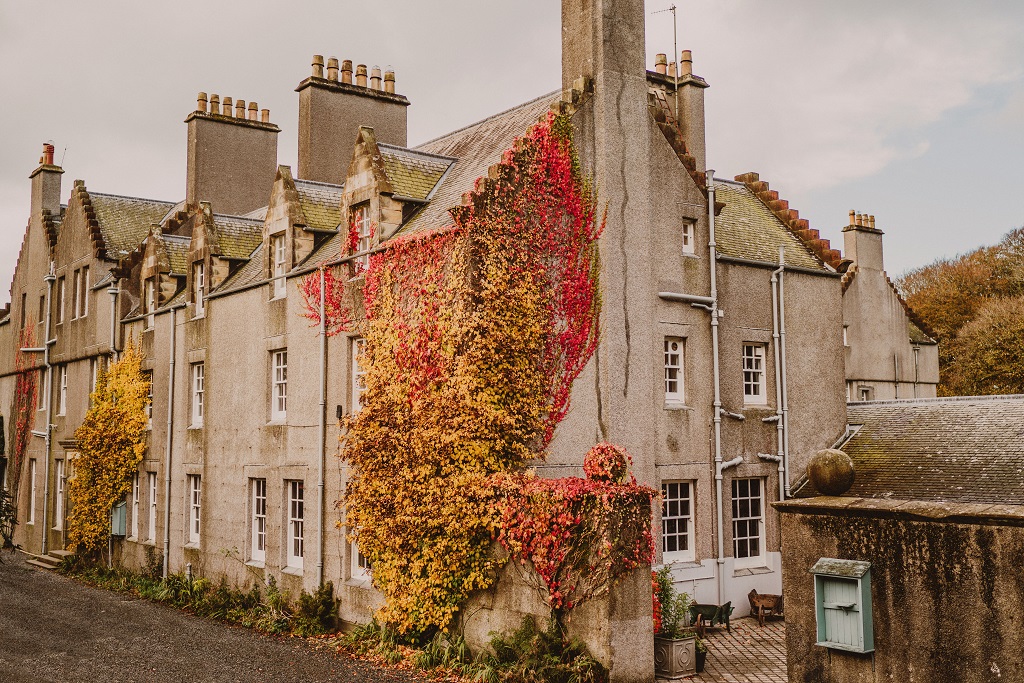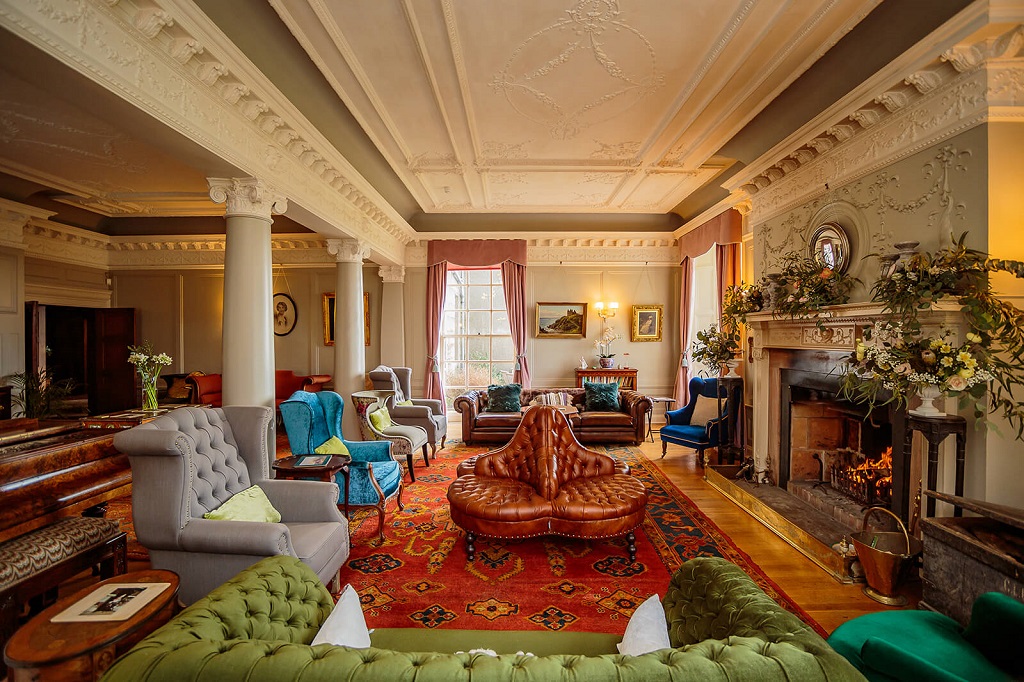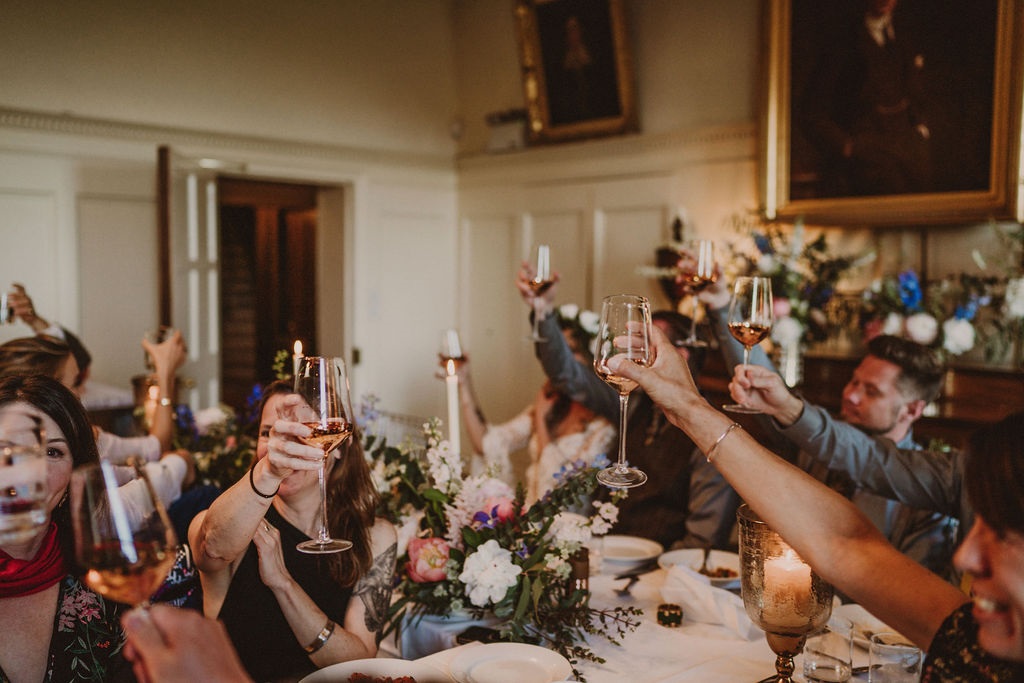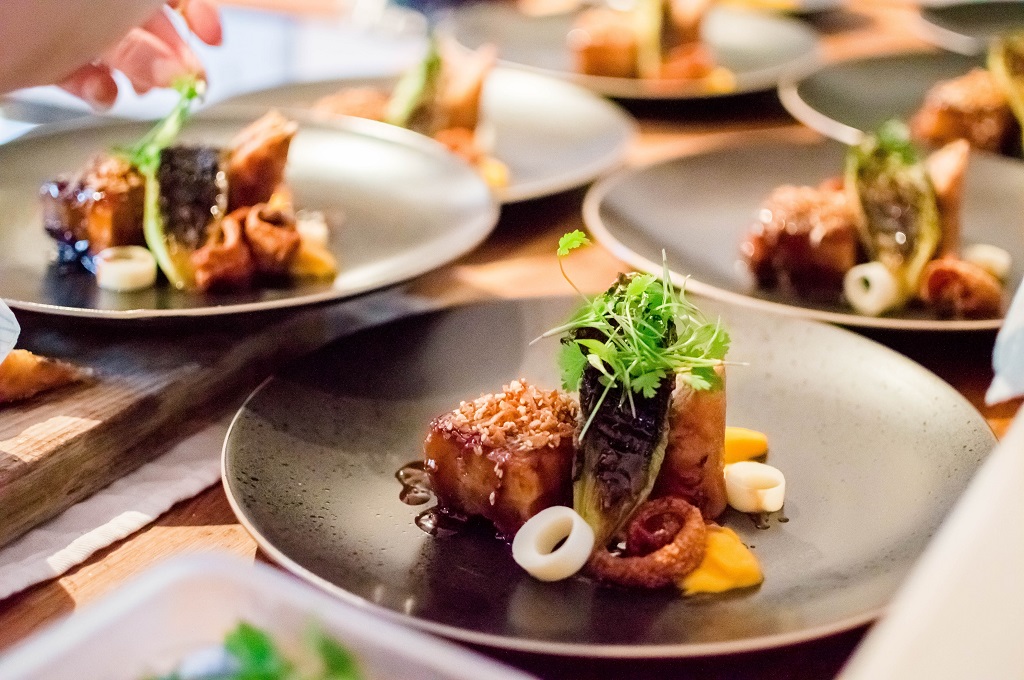Just outside of Portpatrick lies an unravelling secret.
Within a seemingly endless estate, a classic house has opened its doors to new life and an exploration of Dunskey’s rich history.
It’s dark, and raining. A car, not fit for this weather, has just sped up the tree-lined path to our destination and I have no idea what to expect.
A man in a tweed waistcoat ushers us in and introduces himself as Alister, one of our hosts. A crowd surround a tiny and immaculately presented bar, whilst Anne, a woman radiating a serene sense of purpose, leads us upstairs.
This century-old Edwardian house is a myriad of classically decorated rooms. I am greeted by a scent, which Anne explains is personal to our surroundings and each room, in this case juniper and sage.
The framed feathers on the walls and antique typewriters in the hallway combine modern taste with the authentic sense of a stately home. In the few years in which they have been exploring the house, new rooms, artefacts, resources and history have all been unearthed.

Agi, the head of staff, tells me she has endless fun finding crockery for tea parties in this room whilst the good natured and exceptionally talented chef Chris Stanley-Fotos has transitioned to seasonal cuisine appropriate for the natural expanse of the setting beautifully.
A timeless scene fit for a whodunit awaits. Down the staircase, past the bear shot by Alister’s grandfather, and through the stag heads adorning the walls, stand a doctor, a plumber, a Lord and a dentist, who announces that staying at Dunskey is ‘like stepping into a dream’.
Around a candlelit table games and stories are shared, and the food is sourced as if in a bygone era, by foraging and making use of the local larder. Loch Duart salmon cured in treacle, Galloway cheddar mousse. Nose to tail pork from a local farm, head, ears, shoulder, belly, rump and, to add a bit of fun to the proceedings, trotter.
Before I know it, I burn off my desert in the billiard room, running around a huge snooker table with aspirations of winning a game of ‘Frida’, surrounded by Beecher the dog, books bought by the metre and a deep sense of family history.
A 1785 David Allan painting of the Hunter Blair family hangs in the current hallway, while its twin is visited by passers-by in the National Gallery, a sign of the cultural legacy of this household.

Originally a 12th century castle, sold in the 1660s to John Blair of Dunskey, Minister of Portpatrick, the inhabitants of Dunskey relocated after tragedy is believed to have struck the property. The tale goes that the nanny of a baby unwittingly caused the child to drop in to the cliffs below.
The Ayrshire family resided in the house until 1896 when the heir to the estate, David Hunter Blair, became a Benedictine monk and gave it to the Roman Catholic church after choosing to enter the monastery.
The estate was sold to the industrialist Orr-Ewings in 1901 after Charles Lindsay Orr Ewing married Dorothea Elizabeth Thomasina Hunter Blair on 28 April 1898, bringing the estate back into the previous Hunter Blair line. The original 1706 stone sits, reminiscent of Dunskey’s past, incorporated into the current house, rebuilt in 1904 to an incredibly high quality of workmanship. This rings true in the amount of original sections of the house still in use, such as the bathrooms and plumbing.
After three generations of caretakers, the Orr Ewing family have handed down responsibility for the house to Alister, the current owner, who with his wife Anne has rejuvenated its colourful history.
The club room, in which shooting parties can change, has a gun safe and vintage sporting artefacts adorning the walls, all in use at some point by the Orr Ewing Family. As we discover the stretch of the estate in the morning light, it is clear that the influence of the inhabitants of Dunskey goes much further than the house.

Through a secret door, the botanical gardens of Dunskey start with fine examples of Mackenzie and Moncur greenhouses, used for their original purpose, as everything is on the estate, and home to plums, grapes, apples, pears, peaches, fresh garlic and kombucha.
The garden was a working vegetable and fruit garden, then pony paddock, and pheasant coop. The variety is surprising, thanks to the diligence of Alister’s parents, who travelled the length of the country finding rare species of plants, like the Japanese maple tree, which gives off a sweet vanilla caramel popcorn scent once a year.
The garden is designed to be charmingly unkempt, which is in contrast to the garden maze, a precise and beautiful piece of landscape architecture. The woods surrounding the house have a distinctly medieval feel to them, with lichen clinging to the trees and quiet lochs with nesting swans surrounding them.
The fairy glen goes down past the pleasure grounds with little heather huts and a 200-year-old stone bridge overlooking a waterfall pouring all the way down to the beach through the woods. Rare orchids grow on the headlands and insect species unknown elsewhere thrive in the diverse environment. It seems Dunskey has repaid the Orr Ewings’ enthusiasm and the loving labour expended on the estate, with a natural generosity of its own.
The landscape changes every time you reach another path, allowing a variety of activities. There is archery, kayaking, cold swimming, and a golf green, where Alister tells me his uncle hit a ‘bad’ drive at age 13 on the 13th hole, somehow managing a hole in one on a par four and achieving local notoriety.
The Southern Upland Way, a popular walking trail, draws up to the cliffs where a lighthouse stands on Rocky Bay, also known as Port Kale. Tourists can also catch and sell fish around the deepest sea trench in the whole of the UK, an area which is abundant in lobster, crab, mackerel, pollock and sea bass.

This coastal stretch of sandy and rocky beaches contrasts with the woodland, while the edge of the estate looks across to the Isle of Man, Mull of Kintyre and Ireland. The cable hut brought the first four wire telephone cable connected to the land system in 1893, and is now used for visiting shooting parties. Guns can line up on the beach as the birds take off from the cliffs heading towards the sea.
As we experience the estate, it is clear that the intention of the owners is for those who visit to feel they have had another home with no limit on what their imagination creates. As they open up their home to weddings, film crews and dinner guests with questionable culinary histories, they also share an undoubtedly unique and genuine hospitality, giving a memorable experience to all that enter.
Friends, families, colleagues and couples who rarely leave the house find they have stumbled upon a small piece of magic at Dunskey, becoming part of the fascinating history of the estate.
The Dunskey Estate, Dunskey Estate, Portpatrick, Stranraer, DG9 8JS.
Visit the website HERE.
TAGS

